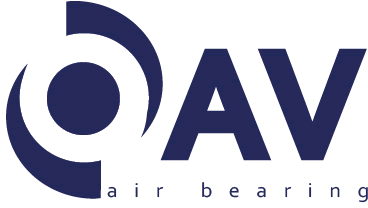
What is an Air Bearing?
An air bearing is a non-contact, frictionless bearing system that operates on a thin layer of pressurized gas. Instead of traditional lubricants, the air itself forms a uniform film between the surface and the substrate. The result is ultra-precise, maintenance-free motion with zero mechanical contact, no friction, higher stiffness, and exceptional cleanliness.
Where are Air Bearings Used?
Air bearings are essential in industries where precision, smooth motion, and minimal friction are critical. They are widely applied in:
-
Transportation – such as maglev trains and advanced aircraft landing gear systems for efficient, smooth operation.
-
Manufacturing & Automation – enabling high-speed, high-accuracy positioning.
-
Metrology & Research – providing stable, low-friction platforms for measurement, testing, and experimentation.
-
Other Industries – including automotive, robotics, turbomachinery, semiconductor production, and medical equipment.
Why Choose OAV Air Bearings?
OAV Air Bearings are engineered for unmatched performance:
-
Zero Friction, Infinite Lifespan – The coefficient of friction is dictated by air film movement, not surface contact. At zero velocity, friction is eliminated, allowing for theoretically infinite motion resolution.
-
Cleanroom Compatibility – With no lubricants or particulates, OAV bearings are contaminant-free and ideal for cleanroom environments.
-
High-Speed Nano-Precision – Delivering superior accuracy, repeatability, and stability, even at extreme speeds.
-
No Heat Generation – Ensuring reliable performance and consistency without thermal distortion.
OAV Air Bearings combine precision, durability, and cleanliness—making them the preferred choice for advanced engineering and scientific applications.













